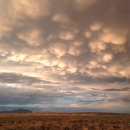Bi-State Sagebrush Ecosystem Enhancement Project
Funding Year | Amount | Location |
FY23 | $250,000 | Mono, California |
Project Description
This project will enhance vegetation communities in the sagebrush sagebrush
The western United States’ sagebrush country encompasses over 175 million acres of public and private lands. The sagebrush landscape provides many benefits to our rural economies and communities, and it serves as crucial habitat for a diversity of wildlife, including the iconic greater sage-grouse and over 350 other species.
Learn more about sagebrush ecosystem and focus on protecting/restoring wetlands and mesic habitats. Activities to be funded under this proposal include grazing management (e.g., removing and replacing older fencing with wildlife friendly fencing, water development, irrigation improvements), addressing conifer encroachment, and mesic/riparian area enhancement to slow and disperse water flows and capture sediment which will restore altered hydrology, and restoration of aquatic systems for fish passage fish passage
Fish passage is the ability of fish or other aquatic species to move freely throughout their life to find food, reproduce, and complete their natural migration cycles. Millions of barriers to fish passage across the country are fragmenting habitat and leading to species declines. The U.S. Fish and Wildlife Service's National Fish Passage Program is working to reconnect watersheds to benefit both wildlife and people.
Learn more about fish passage .
Partners
Walker Basin Conservancy, Private landowners, State and Federal partners



